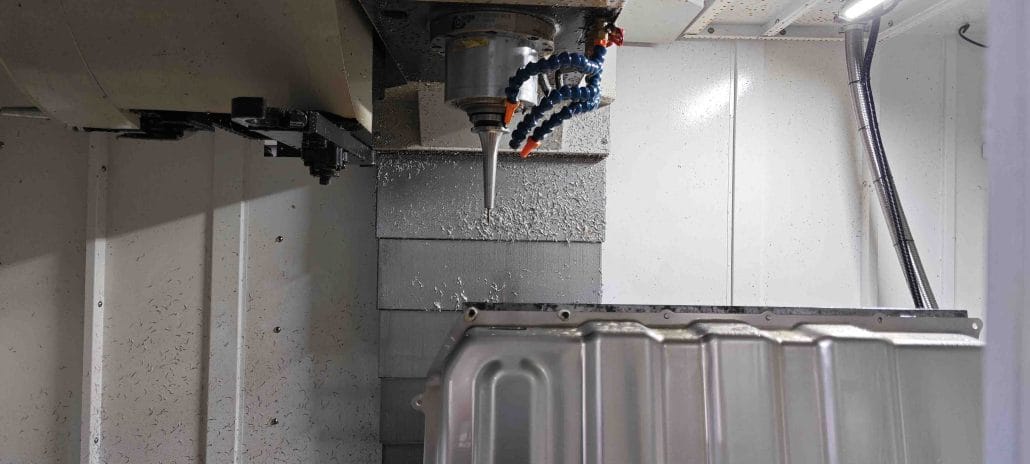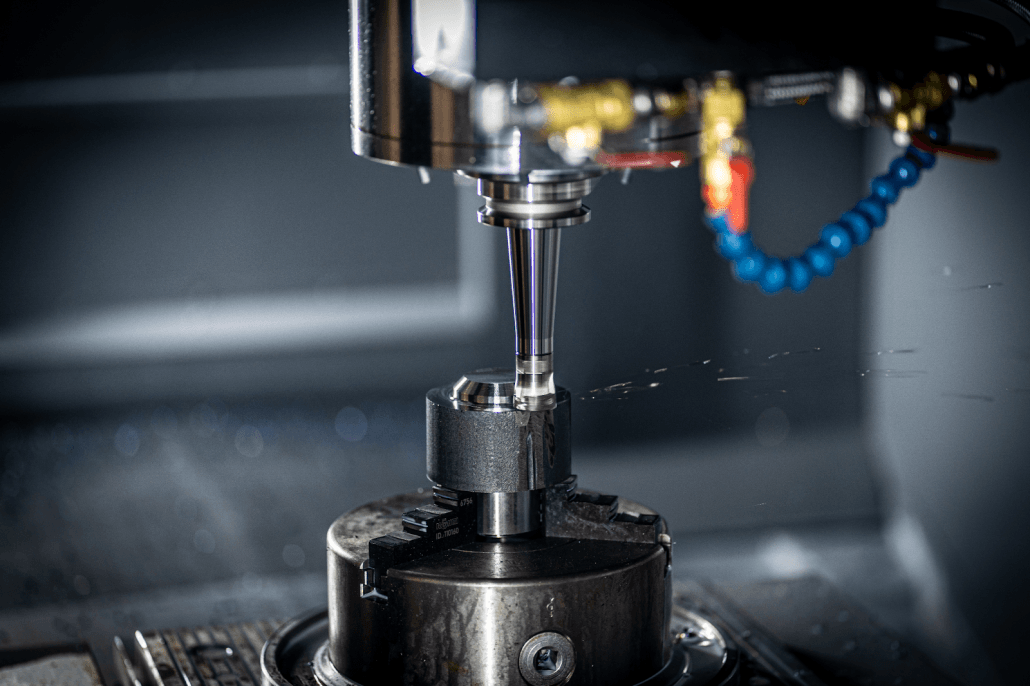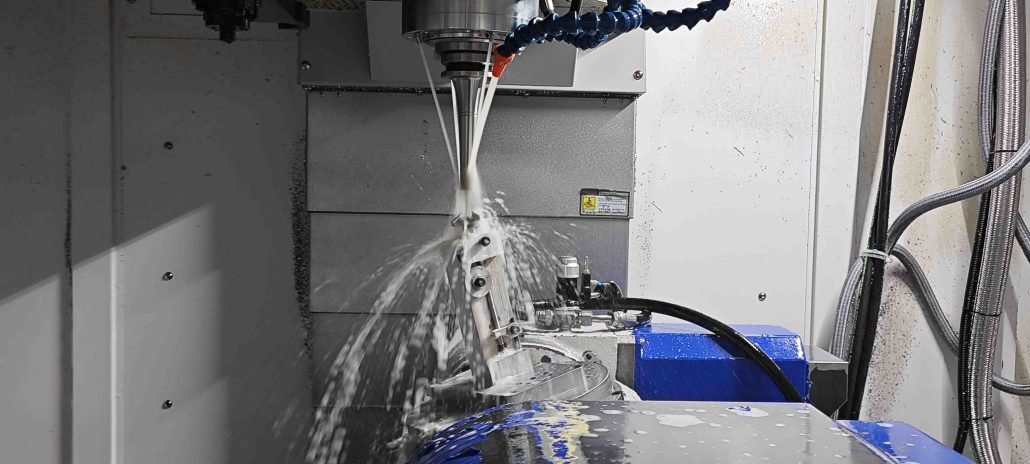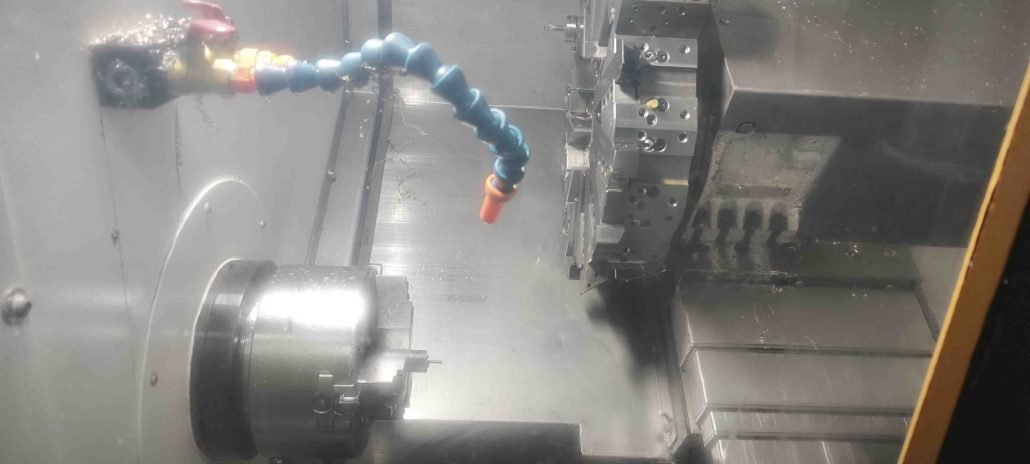This document provides an overview of machining methods for stainless steel, including the best tools for the job and the differences between various grades of stainless steel. It also explores the advantages of CNC machining and the four classifications of stainless steel. Whether you’re a manufacturer, engineer, or just curious about the topic, this document provides valuable insights into the world of machining stainless steel.
What is Stainless Steel CNC Machining
CNC (Computer Numerical Control) stainless steel machining is an automated process that uses computer-controlled machine tools to accurately cut and shape stainless steel. This machining method can produce high-precision, complex parts, while also increasing production efficiency and reducing labor costs.
The CNC stainless steel machining process mainly includes the following steps:
- Design part models: Use CAD software to design part models and convert them into G-codes suitable for CNC machines.
- Select suitable cutting tools: Based on the hardness and material characteristics of stainless steel, select suitable cutting tools such as drills, end mills, and turning tools.
- Machining process: Fix the workpiece on the CNC machine, move the cutting tool to the correct position according to the G-code, and start machining.
- Inspection and adjustment: During the machining process, it is necessary to regularly check the accuracy and surface quality of the workpiece and adjust the cutting parameters as needed.
- Completion and cleaning: After completing the machining, remove the workpiece from the CNC machine and clean and polish it.
In conclusion, CNC stainless steel machining is an efficient and precise machining method that can be used to produce various stainless steel parts and products. By selecting suitable cutting tools and parameters, high-precision and efficient machining processes can be achieved.

Machining Methods for Stainless Steel
Stainless steel is a popular material in various industries due to its excellent corrosion resistance, durability, and strength. However, machining stainless steel can be challenging due to its toughness and hardness. Here are some of the most effective machining methods for stainless steel:
- Turning: This method is ideal for creating cylindrical or conical shapes in stainless steel. It involves rotating the workpiece against the cutting tool to remove material and achieve the desired shape.
- Milling: Milling is a versatile machining method that can be used to create various shapes and features in stainless steel. It involves rotating a cutting tool against the workpiece to remove material and create the desired shape.
- Drilling: Drilling is a common machining method used to create holes in stainless steel. It involves rotating a cutting tool against the workpiece to remove material and create the hole.
- Grinding: Grinding is a precision machining method that can be used to achieve tight tolerances and smooth finishes in stainless steel. It involves using an abrasive wheel to remove material and achieve the desired shape.
- EDM: EDM (Electrical Discharge Machining) is a non-traditional machining method that is ideal for creating complex shapes in stainless steel. It involves using a high-frequency electrical discharge to remove material and shape the workpiece.
In conclusion, machining stainless steel requires specialized techniques and tools. By using the appropriate machining method, you can achieve the desired shape, tolerances, and surface finish.

The Best Tools for Machining Stainless Steel
When it comes to machining stainless steel, you need to use the right tools to get the job done right. Here are some of the best tools for machining stainless steel:
- Carbide Inserts: Carbide inserts are the go-to tool for turning stainless steel. They are made of tungsten carbide, which is a hard and durable material that can withstand high temperatures and pressures.
- High-Speed Steel (HSS) End Mills: HSS end mills are ideal for milling stainless steel. They are made of high-speed steel, which is a tough and durable material that can withstand high temperatures and pressures.
- Cobalt Drill Bits: Cobalt drill bits are the best choice for drilling stainless steel. They are made of cobalt steel, which is a hard and durable material that can withstand high temperatures and pressures.
- Grinding Wheels: Grinding wheels are the best tool for grinding stainless steel. They are made of abrasive materials like aluminum oxide or silicon carbide, which can remove material quickly and efficiently.
- Wire EDM Machines: Wire EDM machines are the best tool for creating complex shapes in stainless steel. They use a thin wire that is fed through the workpiece and is charged with electricity to remove material and shape the workpiece.
In conclusion, machining stainless steel requires specialized tools and techniques. By using the appropriate tools, you can achieve the desired shape, tolerances, and surface finish. Make sure to choose the right tool for the job to get the best results.

The Ideal Cutting Process for Stainless Steel
Stainless steel is a popular material in various industries due to its excellent corrosion resistance, durability, and strength. However, machining stainless steel can be challenging due to its toughness and hardness. That’s why selecting the right cutting process is critical to achieving the desired shape, tolerances, and surface finish.
CNC turning machining is one of the most effective cutting processes for creating cylindrical or conical shapes in stainless steel. This process involves rotating the workpiece against the cutting tool to remove material and achieve the desired shape. Turning can be done on a lathe machine, and it is ideal for creating symmetrical shapes, such as shafts, bushings, and bearings.
What makes turning ideal for machining stainless steel is that it is a chip-forming process. This means that the cutting tool removes material in the form of small chips, reducing the risk of work hardening and overheating. Additionally, turning allows for high cutting speeds, making it a faster and more efficient process than other cutting methods.
However, to achieve the best results when turning stainless steel, it’s essential to use the right tools and techniques. For example, using carbide inserts as the cutting tool is highly recommended for their excellent wear resistance and high-temperature tolerance. Additionally, selecting the appropriate cutting parameters, such as cutting speed, feed rate, and depth of cut, is crucial to ensure the desired surface finish and dimensional accuracy.
In conclusion, turning is the ideal cutting process for creating cylindrical or conical shapes in stainless steel. By using the appropriate tools and techniques, you can achieve the desired shape, tolerances, and surface finish, making it a critical process in the machining of stainless steel.
The Difference Between 316 and 316L Machining
When it comes to machining stainless steel, 316 and 316L are two of the most commonly used grades due to their excellent corrosion resistance, durability, and strength. However, there are some differences between these two grades that need to be considered when machining.
The primary difference between 316 and 316L is their carbon content. 316 contains between 0.08% and 0.10% carbon, while 316L has a maximum of 0.03% carbon. This difference in carbon content results in improved weldability and corrosion resistance for 316L.
When it comes to machining, the lower carbon content of 316L can make it easier to machine than 316. However, this also means that 316L has lower strength properties than 316, making it less suitable for applications where high strength is required.
In conclusion, when selecting between 316 and 316L for machining, the carbon content should be considered. While 316L may be easier to machine, it may not be suitable for high-strength applications. By understanding the differences between these two grades, you can select the best one for your specific machining needs.

The 4 Classifications of Stainless Steel
Stainless steel is a versatile material that is commonly used in various industries due to its excellent corrosion resistance, durability, and strength. However, not all stainless steel is created equal, and there are four main classifications of stainless steel that are distinguished by their microstructure and characteristics:
- Austenitic stainless steel: Austenitic stainless steel is the most common type of stainless steel, accounting for around 70% of all stainless steel production. It is characterized by its high level of corrosion resistance, ductility, and toughness. This type of stainless steel is often used in applications where high levels of hygiene and cleanliness are required, such as in the food and beverage industry.
- Ferritic stainless steel: Ferritic stainless steel is a low-cost type of stainless steel that is characterized by its high level of corrosion resistance and magnetic properties. It is commonly used in applications where a combination of good corrosion resistance and lower cost is required, such as in automotive exhaust systems.
- Martensitic stainless steel: Martensitic stainless steel is a hard and strong type of stainless steel that is characterized by its high level of wear resistance and durability. It is often used in applications where high levels of strength and hardness are required, such as in knife blades and turbine parts.
- Duplex stainless steel: Duplex stainless steel is a type of stainless steel that is characterized by its high level of corrosion resistance and strength. It is a combination of austenitic and ferritic stainless steels, which results in a material that is highly resistant to stress corrosion cracking and pitting corrosion. This type of stainless steel is often used in applications where high levels of strength and corrosion resistance are required, such as in chemical processing and oil and gas industries.
In conclusion, the four classifications of stainless steel have different microstructures and characteristics that make them suitable for different applications. By understanding these differences, you can select the best type of stainless steel for your specific needs.
Advantages of CNC Machining of Stainless Steel
CNC (Computer Numerical Control) machining of stainless steel offers several advantages over traditional machining methods. Here are some of the main advantages:
- Precision: CNC machines can produce parts with high precision and accuracy, leading to better quality and consistency.
- Efficiency: CNC machines can operate continuously and at high speeds, resulting in faster and more efficient production.
- Versatility: CNC machines can perform a wide range of machining operations, such as milling, turning, drilling, and grinding, making them suitable for various applications.
- Automation: CNC machines are automated, which reduces the need for manual labor and ensures consistent production quality.
- Cost-effectiveness: While CNC machines may have a higher initial cost, they can be more cost-effective in the long run due to their efficiency and consistency.
In conclusion, CNC machining of stainless steel offers several advantages over traditional machining methods, including precision, efficiency, versatility, automation, and cost-effectiveness. By utilizing CNC machines, manufacturers can produce high-quality stainless steel parts and products more efficiently and cost-effectively.

Stainless Steel CNC Machining Online Quotes
Are you in need of high-quality stainless steel CNC machining services? Look no further! Our company offers fast and easy online quotes for all your CNC machining needs.
Our team of experienced professionals utilizes the latest technology and equipment to ensure that your stainless steel parts are manufactured to the highest precision and quality standards. We are dedicated to providing our clients with the best possible service, from the initial quote to the final product.
Whether you need a single prototype or a large production run, we have the capabilities to meet your needs. Our online quote system makes it easy to get started, simply upload your design files and receive a quote within minutes.
We understand the importance of timely delivery and strive to meet or exceed our clients’ expectations. Our streamlined production process ensures that we deliver your parts on time, every time.
In conclusion, machining stainless steel requires specialized techniques and tools to achieve the desired shape, tolerances, and surface finish. Turning, milling, drilling, grinding, and EDM are some of the most effective machining methods for stainless steel, and selecting the appropriate tool for the job is crucial to achieving the best results. Additionally, understanding the differences between 316 and 316L and the four classifications of stainless steel can help you select the best material for your specific needs. Finally, by utilizing CNC machines, manufacturers can produce high-quality stainless steel parts and products more efficiently and cost-effectively.


